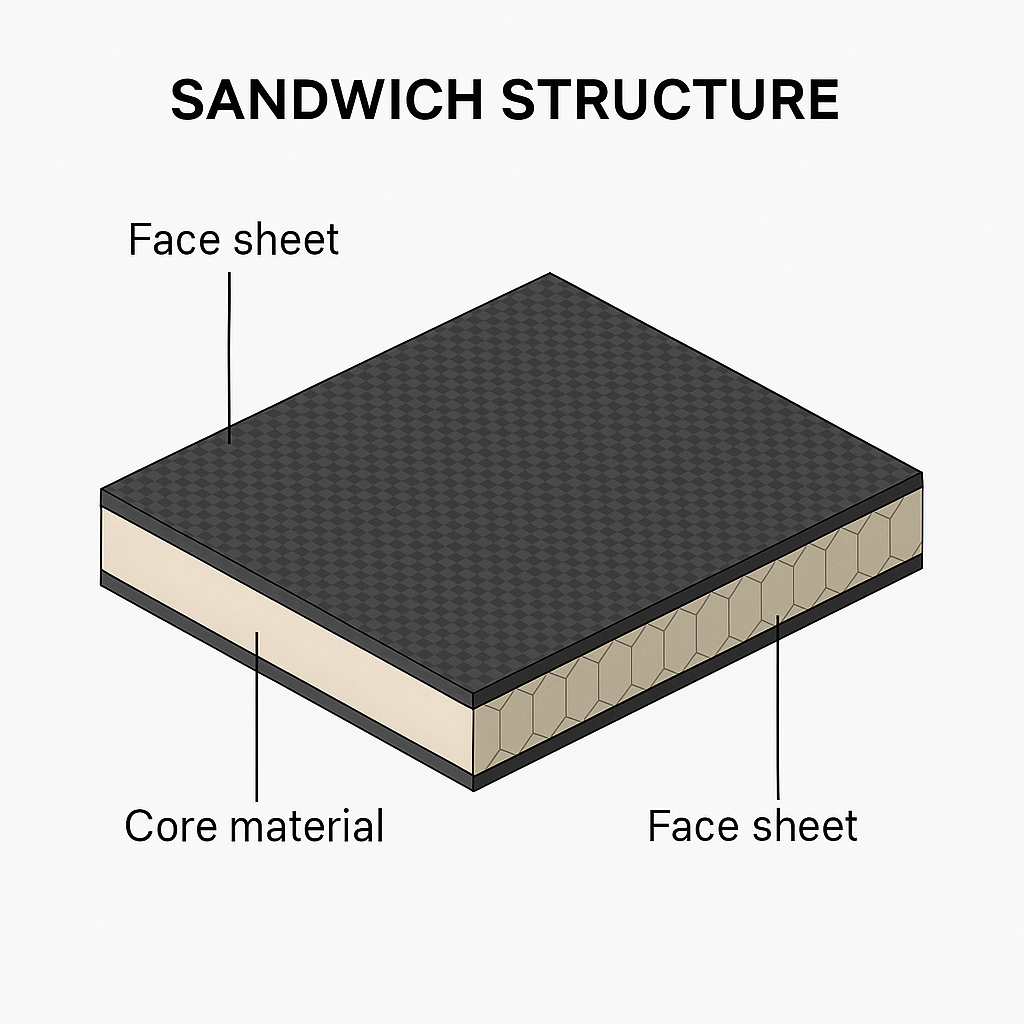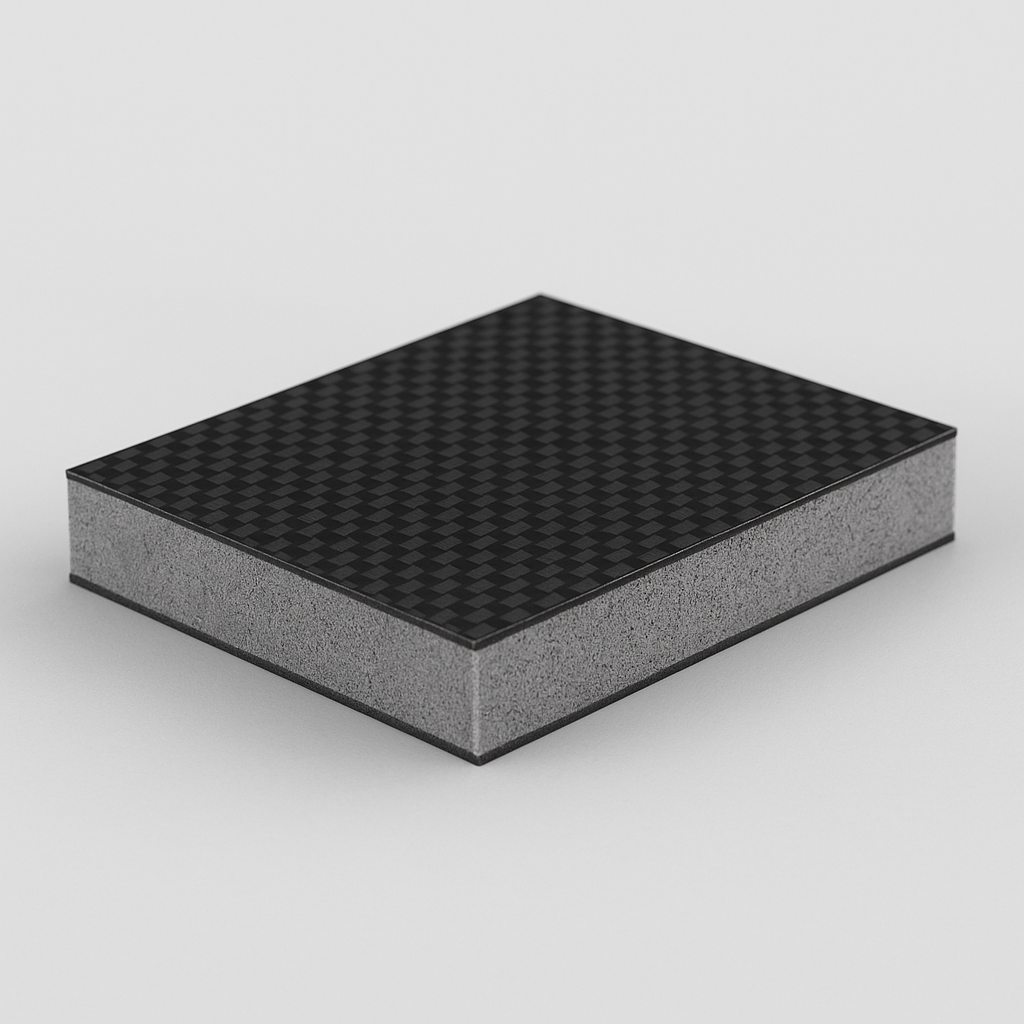Composite materials—especially carbon fiber—are well known for their excellent strength‑to‑weight ratio. However, there is a way to push this ratio even further: by creating sandwich structures.
What is a Sandwich Structure?
A sandwich structure consists of two strong, stiff face sheets (skins) bonded to either side of a lightweight core. The skins carry the in‑plane tensile and compressive loads, while the core maintains the spacing between them increasing the momentum of inertia and resisting shear forces. This makes the structure particularly strong due to the way it distributes loads, working in a similar way to an I‑beam.

The sandwich structure is very simple, yet very effective, as it reinforces the material with a minimum increase in weight.
By separating the high‑strength material into outer layers, the bending stiffness increases dramatically without a proportional increase in weight. This is why sandwich structures are so widely used in sectors such as wind energy, automotive, and aerospace.
Core Materials for Sandwich Structures
The outer skins of a sandwich structure can be made from many different materials, including metals, but one of the most popular options is composites. For the core, there is also a wide range of materials that pair well with skins made from carbon fiber , aramid or glass fiber.
Foam Core Materials
One of the most popular core material is foam.
- PVC (Polyvinyl Chloride) foam is widely used because it is compatible with infusion, prepreg, and RTM processes, and it offers a very favourable balance of cost, processability, and mechanical properties.
- PMI (Polymethacrylimide) foam is another popular choice thanks to its excellent specific stiffness and its ability to withstand temperatures up to 180 °C (356 °F), making it highly desirable in automotive and aerospace applications.

Foams are widely used as core materials in composite sandwich structures.
Honeycomb Cores
Honeycomb cores have proven particularly effective for withstanding the loads experienced by the core. Several materials can be used in this configuration:
- Nomex® aramid honeycomb is very popular in high‑performance applications thanks to its excellent fire resistance, low weight, and dielectric properties.
- Thermoplastic honeycomb made from PET or polypropylene is used in lightweight applications requiring some degree of impact resistance.
- Aluminium honeycomb offers excellent thermal conductivity and compressive strength. While it is heavier than other options, it can be ideal where extreme lightness is not required. If combined with carbon fiber skins, a protective treatment must be applied to prevent galvanic corrosion from direct contact between the two materials.
Natural Core Materials
Two popular natural options for sandwich cores are:
- Balsa wood: the lightest known wood, with a long tradition in wind turbine blade manufacturing and marine applications. It must be sealed to prevent moisture absorption, but it offers excellent compressive strength.
- Cork: increasingly used for its outstanding acoustic and vibration damping properties, with the added benefit of being a renewable material.
Composite materials have unique characteristics thanks to the combination of two or more constituent materials. Their use in sandwich structures further enhances their mechanical performance by working in synergy with the core. This makes sandwich construction a valuable tool for engineers seeking to maximise the potential of materials for each specific application.

